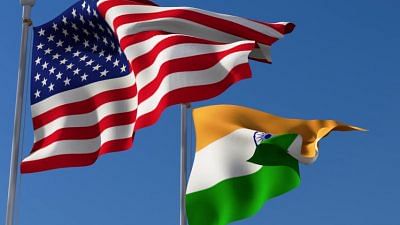New Delhi: The US has finally agreed to extend trade benefits to India under the Generalised System of Preferences (GSP) programme till the formation of a new government in New Delhi and finalisation of a new trade package with it, sources have told ThePrint.
The decision to not withdraw the GSP benefits from India was informed by the Office of the US Trade Representative (USTR) over the weekend. The deadline to withdraw the GSP benefits was 4 May.
“The GSP review is on hold for now…This is the result of some adroit diplomacy on our part from the Ministry of External Affairs, Commerce, PMO and the Indian mission there (in US),” a top Indian official involved in the talks told ThePrint.
The official also added that GSP benefits had been extended “long enough for India to revert after elections and engage with the US side”.
According to another official, who did not wish to be named, the Narendra Modi government has assured the US that it would not import oil from Iran in return for the extension of GSP benefits.
Under the GSP programme, which has been in place since 1976, the US grants some Indian exports preferential or duty-free access to American markets. As many as 5,111 Indian products, ranging from textiles to engineering goods, are covered under the GSP, of which India has been using the benefits for 2,167 products.
In March, the Donald Trump administration had declared it was reviewing the GSP benefits offered to Indian exporters for a period of two months, after which it will be done away with. That two-month window expired on 4 May.
India gets GSP benefits worth $5.6 billion out of the $46 billion worth of goods it exports to the US by means of zero or reduced tariffs. It is given mostly to labour-intensive sectors like leather, jewellery and engineering, among others. Withdrawing the GSP benefits would have had an impact on jobs.
India currently enjoys a trade surplus of $21.27 billion with the US, according to the 2017-18 data from the Ministry of Commerce and Industry.
Also read: India gives in to US pressure, fully stops import of Iran oil
‘US keen to resume talks for trade package’
The second official quoted above said the US is hopeful that a new government in India would be keen to resume talks for a beneficial “trade package” under which India “will be importing more and exporting less” to America. Else, the official said, a trade war between India and the US is “imminent”.
The US also wants enhanced market access for its dairy products, pharmaceuticals and medical devices under the proposed trade package. The Modi government had engaged with the US on this but could not conclude the talks as the Lok Sabha elections kicked in. As a result, the US threatened India with withdrawing the GSP benefits.
“On the heels of India’s agreement to cease oil imports from Iran, it is good to see the US is at least willing to give more time on the GSP review,” said Rick Rossow, senior adviser and Wadhwani Chair in US-India Policy Studies at Washington-based Center for Strategic and International Studies.
“I am not sure any future government will have a more pro-trade bent, though some domestic reforms related to foreign investment are typical steps in a new government’s term, and may help avoid a deepening trade fight,” Rossow added.
US unhappy with tariffs
The US is miffed with India for increasing customs duties on a range of products that are of export interest for America such as automobiles, motorbikes and a range of telecom and technology products.
Last week, during a visit to India for the US-India Commercial Dialogue, US Secretary of Commerce Wilbur Ross came down heavily on India for having “overly restrictive market access barriers.”
According to Ross, bilateral trade between the two countries currently stands at $142 billion, up almost $16 billion from 2017.
Also read: US needs India as an ally against China and can’t afford to bully it over Iran oil, trade



